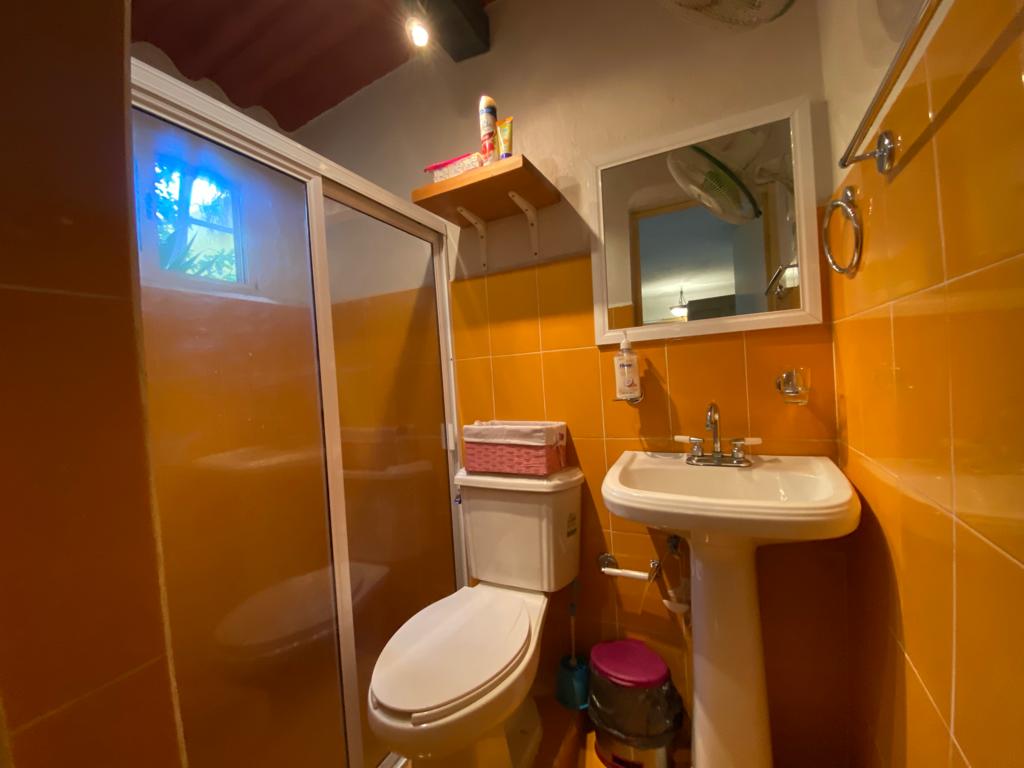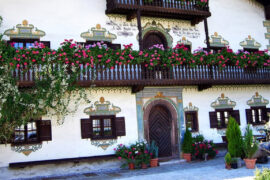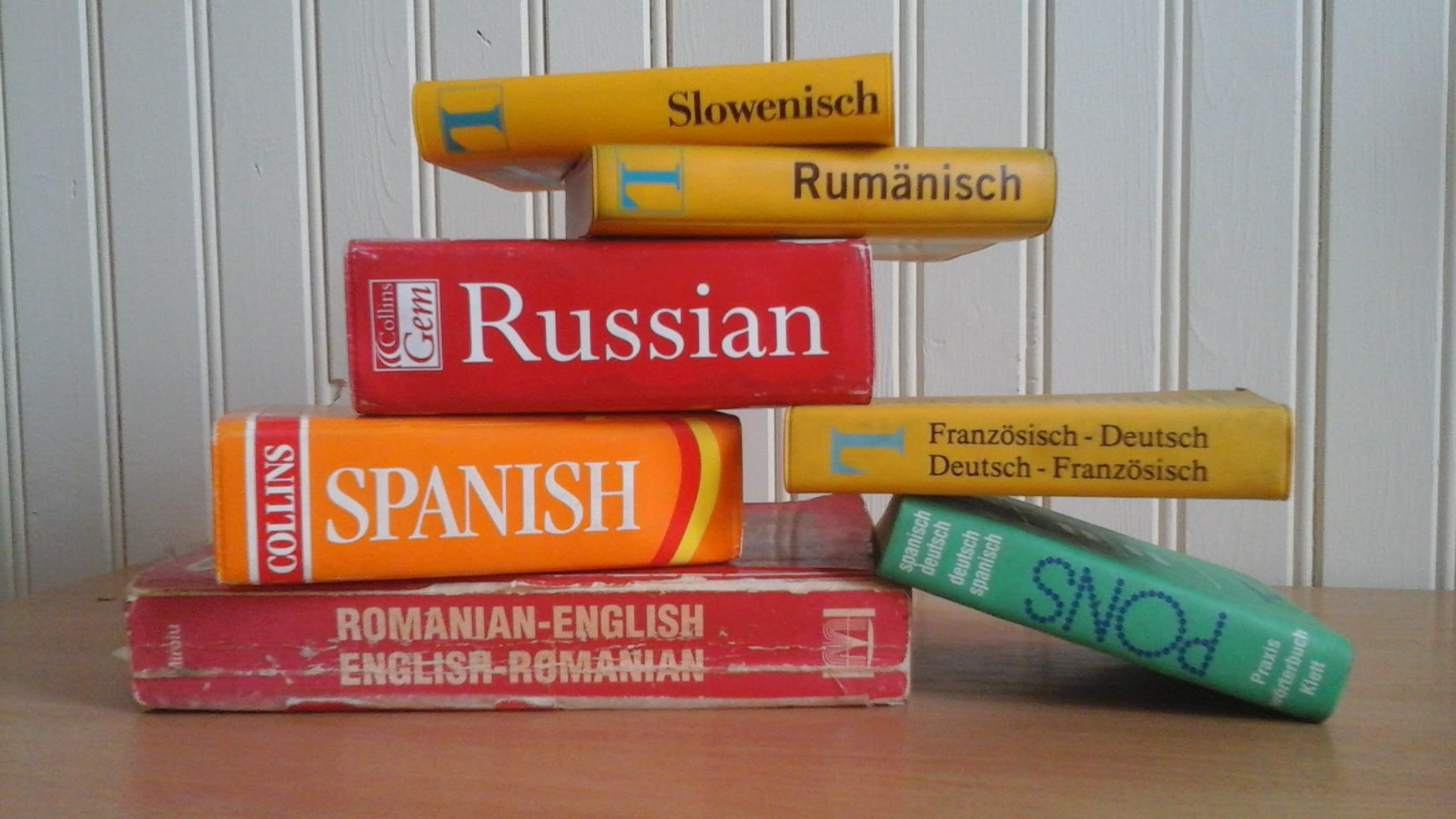We’ll Coach You Until You Reach Your Spanish Goals
We Guarantee If You Give Us 100+ Hours, You’ll Speak Spanish Comfortably Through Our Exclusive Polyglot Method, or Your Money Back

“The more that you read, the more things you will know. The more that you learn, the more places you’ll go.“
Dr. Seuss

Ready to Put in the Effort to Speak Spanish Confidently
A polyglot is someone who knows or uses several languages. I consider myself a polyglot because I can communicate reasonably well in Spanish, French, Italian, and Russian.
Do You Want to Learn Spanish?
After teaching Spanish and English in Merida, I made a surprising discovery. The most successful students do not have to be convinced that it takes at least 100 hours to begin to really learn a foreign language and are eager to use English or Spanish to become a better employee, integrate into a new community, or just welcome the challenge.
The least successful students tell me that they feel obliged to learn Spanish to be polite and do not have a clear idea why they want to learn it. They also believe they only need to learn enough Spanish to be “conversational.”
Yet, they do not understand that being “conversational” is actually the hardest skill to master for students. Even basic conversations require you know the right vocabulary, say the words with an accent clear enough to be understood, have some basic grammar, and finally understand what someone else is saying. Even worse, you can’t predict what you’ll need to discuss beforehand.
Americans often believe that speaking Spanish shows your respect for locals. While this is true that locals appreciate your efforts to speak Spanish, it is not the only way to show respect. If you really want to show respect, you may be better off taking my Living and Traveling in Mexico Workshop and learning how to express your needs and ideas in a culturally acceptable way and how to speak English in a way that is easier for locals to understand (avoid idioms, use words that are similar to Spanish as much as possible).
Potential Spanish students should ask themselves if they really are willing to do the necessary work before taking Spanish classes. It may not be necessary to learn Spanish. Many Spanish speakers speak some English and want to practice English with you. Unless you speak Spanish as well or better than locals, there isn’t much reason to use Spanish in a conversation except to improve your own Spanish.
The real benefits of speaking Spanish come after you know Spanish reasonably well. Speaking Spanish will make it much easier to have closer relationships with locals; choose a wider range of quality and less expensive household help; allow you to learn about local’s passions, skills, and culture; help you to meet a broader range of locals, and most importantly, will enable you to integrate into local society more fully. (Typically, locals who speak English are wealthier than average. Many private schools teach some classes in English so that students can use English in business or if they need to immigrate to an English-speaking country).
I feel blessed to have learned Spanish before moving to Merida because Spanish has opened up the beautiful and rich Yucatecan society. Becoming part of Yucatecan society is a fabulous gift worth much more than the relatively small investment of time and money I invested in learning the language.

Sorry, There is NO Easy Way to Learn Spanish or English; it Just Takes Time and Effort.
Once you decide it is worth your time and effort to learn enough Spanish to integrate into local society, you must have enough patience to learn Spanish. There is no magic way to learn Spanish. Some methods will be easier than others. However, usually, one process works for a while (for example, when you are learning vocabulary), and then you need to move on to a different way for the next step in the process.
Even the most skilled language learners only really begin to see the benefits of learning a foreign language after 100 hours of classes combined with many hours practicing Spanish with native speakers outside of class. Most people need at least 300 hours, coupled with an equal or greater number of hours speaking Spanish with locals, to get the most important benefits of learning Spanish or English.

Take Fifty Plus Nomad’s 1-on-1 Intensive Spanish and Courses. We’ll Work With You Until You Succeed. We Guarantee If You Give Us Up to 300 Hours, You’ll Function Comfortably in Spanish in Your Daily Life
When I decided to teach Spanish workshops, I spent a lot of time studying how polyglots learn multiple languages. I found the key to polyglot success was patience and flexibility. Almost every polyglot develops his or her own methods for learning a foreign language. Some love grammar; others learn mostly by talking to native speakers; others always listen to their target language. There is only one constant to most polyglots’ success: it requires time to learn a foreign language.
I will use many different methods until we find your best learning methods. (Usually, most students need to change the methods they use a couple of times before they begin to master Spanish). I will also encourage and gently push you until you learn Spanish.
Occasionally we will probably have some problems on the road to Spanish mastery. However, one of the most enjoyable moments of my life is when a student is finally able to make a real success in their language learning journey. I am sure that if you just keep going, you will be glad you invested the time and effort to learn English or Spanish.

What is the Most Effective Way to Learn Spanish?
I Believe Almost Anyone Can Learn Spanish
I am 57 years old. I have learned Spanish using almost every method out there. I know which strategies work for me and which ones may work for you.
I don’t enjoy teaching just for a paycheck. If I did, I would work for an online teaching company with prepackaged lesson plans.
If you come to my house in Merida, you will avoid the distraction of everyday life at home, and we can concentrate on helping you achieve your Spanish-language goals and dreams. In addition, I believe studying in a homey environment helps students feel more relaxed than looking online.
I also highly encourage students to live with a local family. Living with a local family (especially if you eat meals with them) has been key to my language learning success.
I will gear the class toward your needs. If, for example, you want to learn Spanish to live in or travel long-term around Mexico, we will also learn about cultural issues between Mexicans and your home country.
I will also try to teach the dialect used wherever you plan to live or travel. If you plan to live or travel in Yucatan, you will have the bonus of practicing the local dialect with native speakers during and after your classes. (Note: Most Yucatecans are also familiar with Mexican Spanish and can help you learn words and expressions used in other parts of the country as well).
My 1-on-1 Spanish classes in my home, Casa Los Dos Gallos, in Merida, Mexico, or online, come from my studies about how polyglots successfully learn multiple foreign languages and my observations about the needs of learners over 50.

The Fifty Plus Nomad Workshop Motto
In the living room of my house, where most of my classes are held, I had a sign made that reflects my personal motto about living and traveling abroad and learning a foreign language: Equally Logical But Different.
I first saw this motto in a classroom when I attended a 3-day orientation for Youth for Understanding summer exchange students in Japan held at Stanford University. The orientation instructors kept pointing to the sign whenever they would explain how the Japanese looked at the world differently than Americans. The motto stuck in my brain more than anything I learned in school and has shaped my worldview immensely even to this day.
My interpretation of the motto is that every culture, language, and society makes sense if you study its history, geographical situation, and economics. Traveling around the world, I discovered that most of the world’s cultures are actually more different than most people realize, but they are also well suited to the needs of their population.
Once you have enough background about a country or language, every culture seems logical and understandable. You just have to try to put yourself into the shoes of another group of people, and it is not that hard to understand their behavior.
In addition, I have learned that there are many things from different cultures that I try to integrate into my own life and that many things I treasure about a place are often undervalued by locals themselves.
I often refer to the motto in my classes. It is a philosophy that has guided me through a lifetime of discoveries about myself and the world. I hope my motto will also help my students as well to create a dream life on the road or living abroad.

Want to Know More About Your Teacher?
Paul Heller

I have devised the unusual and effective polyglot method to tutor students in one-on-one Spanish classes based on:
- Taking over 500 hours of Spanish classes using various techniques at schools in Mexico, Spain, Peru, Nicaragua, and Argentina. See my post: Pros and Cons of the Top 10 Ways to Study a Foreign Language (From 40 Years of Personal Experience, for a synopsis of how I learned Spanish and why the eclectic method, which is the base of my exclusive polyglot teaching method, works best for me.
- Three years of experience teaching classes and tutoring in English and Spanish to a wide range of students from diverse age groups, nationalities, and financial backgrounds.
- Completing twenty language teacher preparation classes through the University of California at Riverside and various online programs.
- Receiving a minor in Spanish from Macalester College.
- Spending nearly six years living and traveling in Spanish-speaking countries.

How Much Do the Courses Cost?
To encourage students to take classes intensively, the class cost per hour will be substantially less as the number of hours of classes increases. (My in-home classes last between 10-20 hours a week, 2-4 hours per day).
Here is the breakdown of the cost of the classes:
- All Fifty Plus Nomad courses and workshops include a free non-obligation introductory session up to 2-hours long to allow us to explore if my methods and teaching style work for you, give you a sample class, and schedule the workshop or course.
- The Intensive course is $20 per hour for the first 100 hours (400 Mexican pesos; CA$26) and $10 per each additional hour over 100 hours (200 pesos; CAD $13).
- You are encouraged to take at least 100 hours of the Intensive Course; however, if you do not want to commit to 100 hours or more of the Intensive One-on-One Spanish course, you may want to consider taking my Survival Spanish for Travelers (30 hours), Survival Spanish for Expats (60 hours), or Teach Yourself Spanish (30 hours) workshops instead. (Teach Yourself Spanish is not for beginning Spanish students).
If you take more than 50 hours of the intensive course you’ll get the “Living and Traveling in Mexico” or “Travel Long Term Round the World On Any Budget” Workshop for FREE and a FREE Yucatecan Experience Package. (The Rustic Yucatecan Home-Cooked Meal is only available in person in Merida).
We will also provide free or low-cost supplemental tours, cooking classes, and other activities if you take the courses in person at the Casa Los Dos Gallos in Merida.

The cost of living in Merida is much lower than in the US, Canada, or Europe, so you can take several months of classes and live with a local family or rent my casita (including some meals) for $80-$125 per day ($2400-$3750 per month). Less than most Fifty Plus Nomads spend daily living in the United States or Canada.



Study at Casa Los Dos Gallos
Casa Los Dos Gallos (built around 1900) is a comfortable, recently renovated, 2-bedroom, 2-bath house (around 1400 square feet, 150 square meters) complete with modern appliances, tile floors, mamposteria (stone) walls, tiled floors, and antique, wooden carved doors. The house is in Merida’s trendy Parque Mejorada area within a five to fifteen WALK of Centro’s major attractions, restaurants, and shops.
The Main House
Classes take place in the main house. Students have access to the kitchen and high-speed WiFi. All the areas used by students have air conditioning and fans and seldom get very hot.
Outdoors
Bright, ventilated areas. Classes and workshops are also held outdoors, weather permitting.


Accommodations
Staying in the casita and/or with a host family is highly recommended. That way, you can practice Spanish or English with Juan Carlos (my assistant), me, or a host family. Staying with a host family will also help you better understand Mexican culture and may even help you forge friendships.
I would encourage long-term students (especially students with a beginning level of Spanish) to spend the first month at Casita Lobita and the rest of their stay with a local family. Living with a local family is often frustrating until you have at least 50 hours of Spanish under your belt. However, it is precious after 100 hours of study.

Stay at Our Onsite Casita Lobita at a Discounted Rate During Your Classes
You can also spend the week at the Casita Lobita, which is at the back of my house, 33% less than offered on Airbnb. The cost of staying with a host family and casita is the same: $100 per week for four weeks and $80 per week for each additional week.
Casita Lobita is a beautifully decorated, quiet haven away from the hustle and bustle of downtown (Centro) Mérida, Mexico.
A ten-minute walk from the City’s historic Plaza Principal (Main Plaza), Casita Lobita is equipped with everything you could need for a comfortable stay, including:
- A kitchenette with a coffee maker, plates, utensils, cups, and glasses
- A new air conditioning and fans
- High-speed internet access, a new TV (with Netflix), and a telephone
- A private bathroom (with a shower).
Though guests have to enter through the main house to get to the casita, guests also have easy access to a large, fully equipped kitchen, an enclosed patio, a terrace, a laundry area, and a garden. In addition, the areas of the house that get the most traffic are separate from the regions guests need to pass through to get to the casita.
Paul Heller and his Yucatecan friend and house manager, Juan Carlos Cab, enjoy getting to know their guests (if desired) and helping them get the most out of their stay in Merida. Breakfasts are also available upon request.
Guests will also be greeted by and get to know the world’s sweetest and most mellow dog, Lobita, which means little wolf in English. (The Casita is named Casita Lobita in her honor).
Note: Smoking is permitted on the patio.

Homestay
I recommend that you wait until you have some Spanish under your belt before studying with a family. I want you to be able to have some basic conversations with your host family in Spanish or English as soon as possible. (English students will be placed in the home of local expat English-speaking families, subject to availability).
Homestay accommodation may be pretty modest. You are guaranteed to have your own bedroom but may not have your bathroom. Most likely, you will not have air conditioning either.
One meal per day is included with the homestay. Laundry is not included in the cost of the homestay. You are encouraged to make arrangements with the home family to provide laundry, additional meals, and services for an extra fee.
The cost of staying with a host family and casita is the same: $100 per week for four weeks and $80 per week for each additional week.
You will be provided with information about your homestay arrangements upon placement. Homestays are subject to availability.

Fifty Plus Nomad offers personalized workshops and courses in Spanish, English, Living and Traveling in Mexico, and Long-Term Travel Book a Two-hour Free Sample Introductory Session

MERIDA, YUCATAN
Mérida, recently designated as the twelfth best city for travelers worldwide by Travel and Leisure magazine readers, is a city of about a million people. It is also known as Mexico’s safest big city, North America’s third-largest colonial city, and a rapidly growing home for expats and wealthy Mexicans from other parts of the republic.

(By Arian Zwegers from Brussels, Belgium – Dzibilchaltun, Temple of the Seven Dolls, CC BY 2.0, Wikipedia.)
PREHISPANIC MERIDA
The Maya World
Merida is an excellent base to explore the Yucatan Peninsula’s ancient Mayan ruins. Experience the temples and pyramids, including Dzibilchaltun. Dzibilchaltun receives hundreds of visitors to see how the sunrise peeks through the temple door during the vernal equinox.
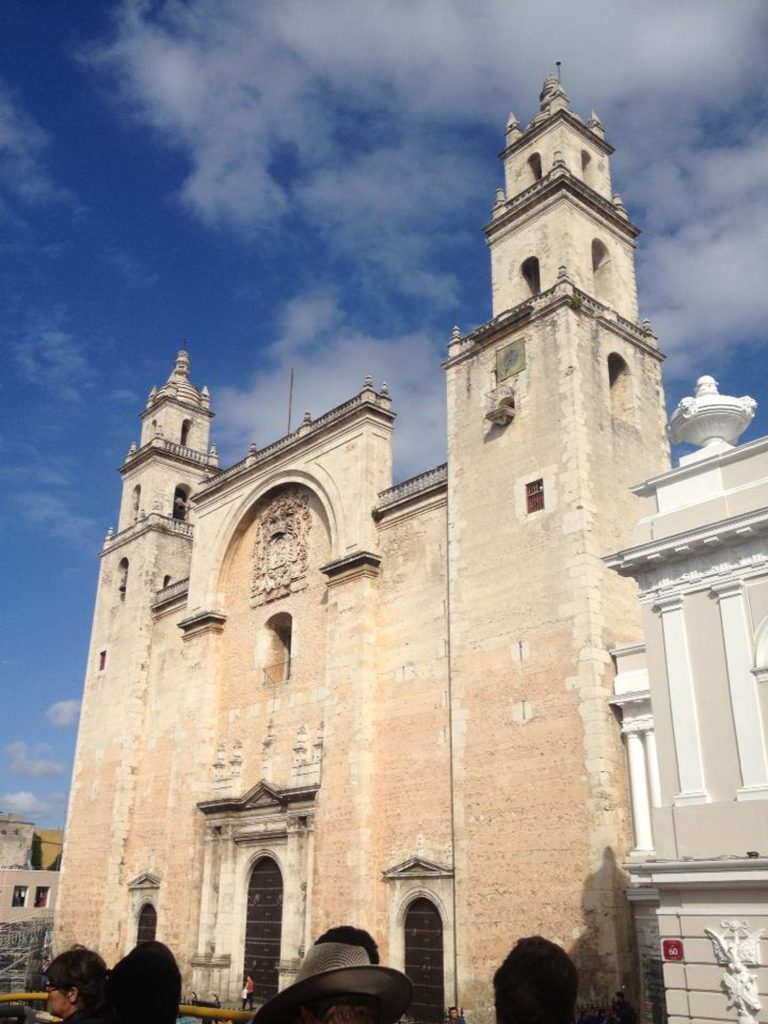
COLONIAL MERIDA
300 years of history
Merida’s colonial architecture from the 16th to 19th centuries is still well preserved. The main avenue running through the City, Paseo de Montejo, is lined with colonial buildings. The Plaza Principal features the murals of the Governor’s Palace, the cathedral, and the Casa de Montejo, Merida’s 16th-century founder.

Photo by Jmagno1998 – Own work, CC BY-SA 3.0, h Wikipedia)
METROPOLITAN MERIDA
American capital of culture
Merida arose from merging three significant cultures: Mayan, Spanish, and Lebanese, giving it a unique personality, architecture, cuisine, and people. Nouveau and Art Deco) buildings coexist in harmony.

THE YUCATAN PENINSULA AWAITS
With Mérida as your base, you can visit the peninsula’s world-class cathedrals and churches, Maya archaeological sites, museums, beaches, haciendas, and cenotes.

CELESTUN
A coastal town located in the Northeastern Yucatan peninsula retains its quiet fishing village atmosphere. Here you can take a boat to spot flamingos and enjoy a relaxing day at the beach.

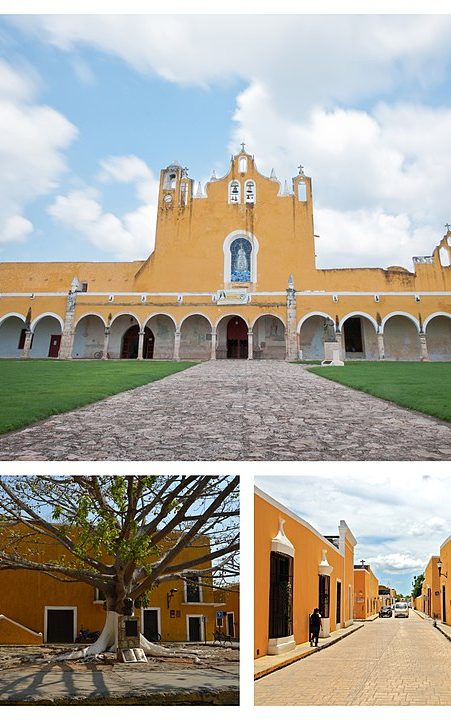
(By Addicted04 – Own work using:File: Convento de Izamal, Wikipedia)
“MAGICAL VILLAGES”
The Mexican government identifies several communities throughout Mexico as “pueblos magícos” or “magical villages.” Among them are Izamal and Valladolid, which feature the region’s rich Mayan heritage and the legacy of the former Spanish colonial period.


(Photo by Francisco-619 – Own work, Public Domain,. Wikipedia)
HACIENDAS
Farther afield from Mérida, visit take two routes to discover the Yucatan’s historic haciendas. The haciendas grew a special species of agave (fourcroydes). The spines of these agave plants’ leaves produced henequen, the world’s strongest natural fiber. The fiber created ropes and cords used throughout the world in the 19th and early 20th centuries.

CENOTES

DZIBALCHALTUN
Known to the Mayas as “dzonot,” cenotes are natural caverns filled with fresh-water pools, where permeable limestone bedrock allows rainwater to filter slowly through the ground, creating underground rivers and pools. Experts estimate that more than 7,000 cenotes have formed under the Yucatan Peninsula; the Mayans considered them to be sacred since, in the past, they were the only source of freshwater.
Dzibilchaltun Cenote pictured here, is 20 miles North of Merida and is next to the Mayan ruins of the same name. People visit Dzibalchaltun from around the world to experience the Vernal Equinox in mid-March.

HUBIKU
While Dzilbalchaltun is an above-ground cenote, most of the cenotes in the Yucatan peninsula are located in caves and are usually at least one hour from Mérida. The Cenote Hubiku pictured here is one of the most popular cenotes in the Yucatan. Hubiku is located about one and a half hours from Merida and a half an hour from Valladolid.

MAYAN RUINS

(Photo by Alex Azabache from Pexels)
CHICHEN ITZA
Located in Yucatan, appointed by UNESCO as a World Heritage and considered one of the “New Seven Wonders of the World”. Chichen Itza covers an area of 6.5 square kilometers. The south part of Chichen Itza dates back to the VII century and shows the Maya Puuc construction style. The central area, built after the arrival of the Toltecs around the 10th century, is a fusion of the Puuc architectural styles and the Toltec culture from Mexico’s Central Highlands.

(Photo by Mesoamerican – Own work, Wikipedia)
UXMAL
Uxmal, located 62 kilometers south of Mérida, is one of the most important Classical period Mayan archaeological sites. UNESCO named Uxmal a World-Heritage Site for its amazing Puuc-style ornamental friezes and enormous pyramids.

Want More Information on How You Can Learn Spanish?
Check out my posts: Top Proven YouTube Videos for Native English Speakers Learning Spanish and Unearth Little-Known Spanish Language Tips for Adults over 50.
Here are some additional language tips from The Linguist (Steve Kaufman) and Jumpspeak.

Additional Posts About Fifty Plus Nomad’s Courses and Workshops, Blog, Definitions, Biographies, and News
Fifty Plus Nomad Is Proud to Be Mentioned as an Expert on Home Exchanges in a Redfin Blog Post
Learn Spanish or English Like A Polyglot Using Fifty Plus Nomad’s Exclusive Polyglot Method
10 Reasons I am an Expat Retiree in Mexico Versus Costa Rica
Aprende Inglés con un Hablante Nativo en Mérida, México o En Linea a Través de Clases Intensivas y Personalizadas
20 Ways Fifty Plus Nomad Can Help You Become a More Successful Extended Round the World Traveler and Expat
Want to Find Out What Makes the Yucatan So Unique? Take Fifty Plus Nomad’s Exclusive Yucatan Culture and Society Workshop
Experience an Intimate, Authentic Rustic Home-Cooked Yucatan Meal in a Colonial Home in Merida’s Historic Centro
Give Me One Week, and I’ll Show You How to Travel Long Term Round the World On Any Budget
Join Us for a One of a Kind Chance to Experience Traditional Yucatan Food and Culture at a Colonial Home in Merida’s Historic Centro
Take Fifty Plus Nomad’s Living and Traveling in Mexico Workshop and Find Out My Secrets for Creating the Life of Your Dreams in Mexico
Planning to Travel Long-Term Around Latin America and Spain? Why Not Start Your Adventures With Our Survival Spanish for Long Term Travel Workshop Online or In Merida?
Learn English 1-On-1 Using the Proven Polyglot Method with a Native Speaker in Merida or Online
10 Places and Topics Not Included in the Fifty Plus Nomad Blog
The Best Home For US and Canadian Long Term Travelers Over 50: Fifty Plus Nomad
A Fifty Plus Nomad is an Adventurous Long Term Traveler Or Expat Over 50
Pros and Cons of the Top 10 Ways to Study a Foreign Language (From 40 Years of Personal Experience)
Join Fifty Plus Nomad’s Long Term Travelers and Expats Over 50 Facebook Group
Introducing The Revamped Fifty Plus Nomad Blog
















